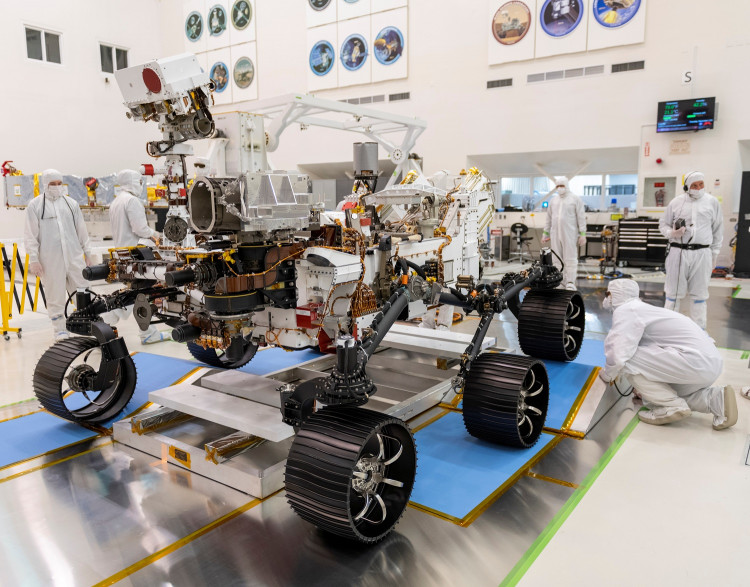Yes, NASA's Perseverance rover actually has a twin here on Earth. And while the other is on its way to Mars, the Earthly sibling is getting ready to roll through a replica Martian landscape for the first time.
At NASA's Jet Propulsion Laboratory in Southern California, a full-scale engineering version of the Mars 2020 Perseverance rover - equipped with wheels, cameras, and powerful computers to help it drive autonomously - has just moved into its garage home.
This rover model passed its first driving test at JPL on Sept. 1, 2020, in a relatively tame warehouse-like assembly room. Technicians plan on taking it out into the Mars Yard next week, where the Red Planet's surface is simulated by a field of red dirt studded with rocks and other obstacles.
"Perseverance's mobility team can't wait to finally drive our test rover outside," said Anais Zarifian, JPL's mobility testbed engineer. "This is the test robot that comes closest to simulating the actual mission operations Perseverance will experience on Mars.
So why does Perseverance have a twin?
On Mars, Perseverance won't have a mechanic. To avoid as many unforeseen problems as possible after the rover arrives on Feb. 18, 2021, the team needs this Earth-bound vehicle system test bed (VSTB) rover to evaluate how hardware and software will perform before transmitting commands up to Perseverance on Mars. This rover model will be especially important to complete a set of software tests so that the team can send patches while Perseverance is on the way to or after landing on Mars.
And just as Perseverance has an appropriate name - one that reflects the hard work of getting the rover on its way to Mars in the midst of a pandemic - its twin also has a name: OPTIMISM.
OPTIMISM is an acronym for Operational Perseverance Twin for the Integration of Mechanisms and Instruments Sent to Mars, but the name is also a tribute to the team's mantra that planned and assembled it for two years.
OPTIMISM is almost remarkably similar to Perseverance: it has the same size, the same mobility system and top driving speed, and the same distinctive head, known as the remote sensing mast. After a second construction phase at the start of the new year, it will have the full range of science instruments, cameras, and computer "brains" that Perseverance has, and also its unique system for collecting samples of rock and soil.
The astrobiology mission of the Perseverance rover will look for signs of ancient microbial life. It will also characterize the climate and geology of the planet, and pave the way for human exploration in the future.


